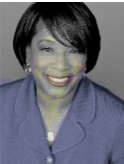 by Cheryl Procter-Rogers
by Cheryl Procter-Rogers
Ready or Not, Here Comes the Coach!
Ideally, coaching can be an inspiring game of hide and seek where we work with our clients to uncover hidden factors that impede progress or elicit unwanted behaviors. In my coaching practice, I love it when during the introductory session the client checks every box for the four stages of readiness. First, they recognize the need to change and communicate a sense of urgency. Second, they are willing to invest the time and money to make the change. Third, the potential client has the capacity and capability to make change happen. And lastly, when asked, they can visualize a future after changes are made. Unfortunately, most don’t check all four boxes. What do you do when the potential client shows signs of being uncoachable?
Given the complexity of the brain and countless motivating factors that guide behaviors, I advise a coach to first engage in self-talk before classifying someone as uncoachable. During the introductory session is when we first determine fit. This is when the astute coach will focus less on the coaching goal and more on building a relationship of trust and understanding that lays the foundation for a lasting bond. An effective way to uncover readiness motivators is when the potential client shares their story. As the story unfolds, how are you responding to what you are hearing? What emotions, if any, are being triggered in you? Are you ready to coach this prospect? Can you put aside your biases in order to seek and accept feedback? If yes, then you are ready to coach. Now, you can turn to the readiness of your client.
In my chapter “The Role of Readiness in Executive Coaching” in the book Coaching Perspectives IX, I share my journey to readiness and how to inspire your clients to uncover their hidden treasures.


